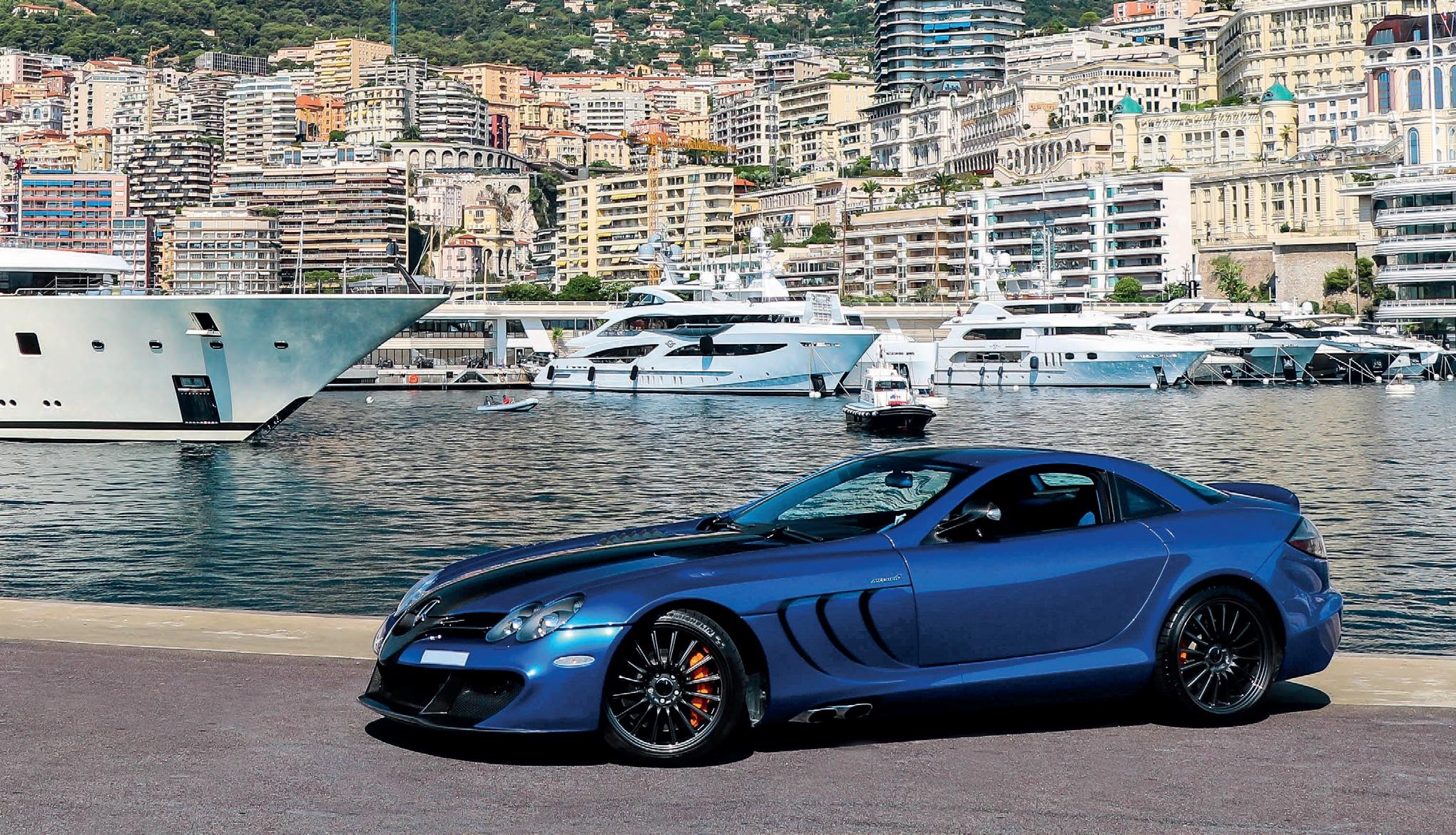
7 minute read
THE PURSUIT OF SPEED
SPONSORED BY
2021 Mercedes-Benz SLR McLaren by MSO
The forging together of McLaren and MercedesBenz’s engineers created something unique for the time – true supercar performance with a GT car’s exemplary manners.
The heart of the SLR is its supercharged 5.4-litre V8, which produces 617bhp and 575lb ft. Just 2157 cars were made, but this is one of 25 SLR McLaren by MSO models built.
The McLaren Special Operations edition includes carbonfibre aero front and rear bumpers to produce higher downforce, new wings, a larger spoiler and bonnet vents as well as mechanical upgrades such as a new ceramic exhaust system, uprated suspension shocks and dampers, an uprated steering rack and a larger cooling radiator.
It also has a smoothed front bonnet, full visual centre carbonfibre bumper, bonnet and roof sections plus many other visual carbonfibre additions. Inside there’s new leather and Alcantara trim, too.
1990 Lamborghini Countach 25th Anniversary
This model was the ultimate expression of the Countach, all pumped-up aggression and eyeball-crushing velocity. By 1990 the car had a 5.2-litre V12 with 449bhp at 7000rpm and 369lb ft at 5200rpm. It took 4.5 seconds to hit 0-62mph and went on to 185mph.
This example was one of 67 RHD cars built, ordered by a life-long Lamborghini devotee to match his 1975 LP400 Periscopio finished in Arancio Miura orange.
Lamborghini didn’t offer that colour in 1990, but such was the owner’s desire to colour-match the pair, he – encouraged by test driver Valentino Balboni – convinced the factory to provide it as a one-off, making the car unique. The current keeper bought and recommissioned it in 2021.
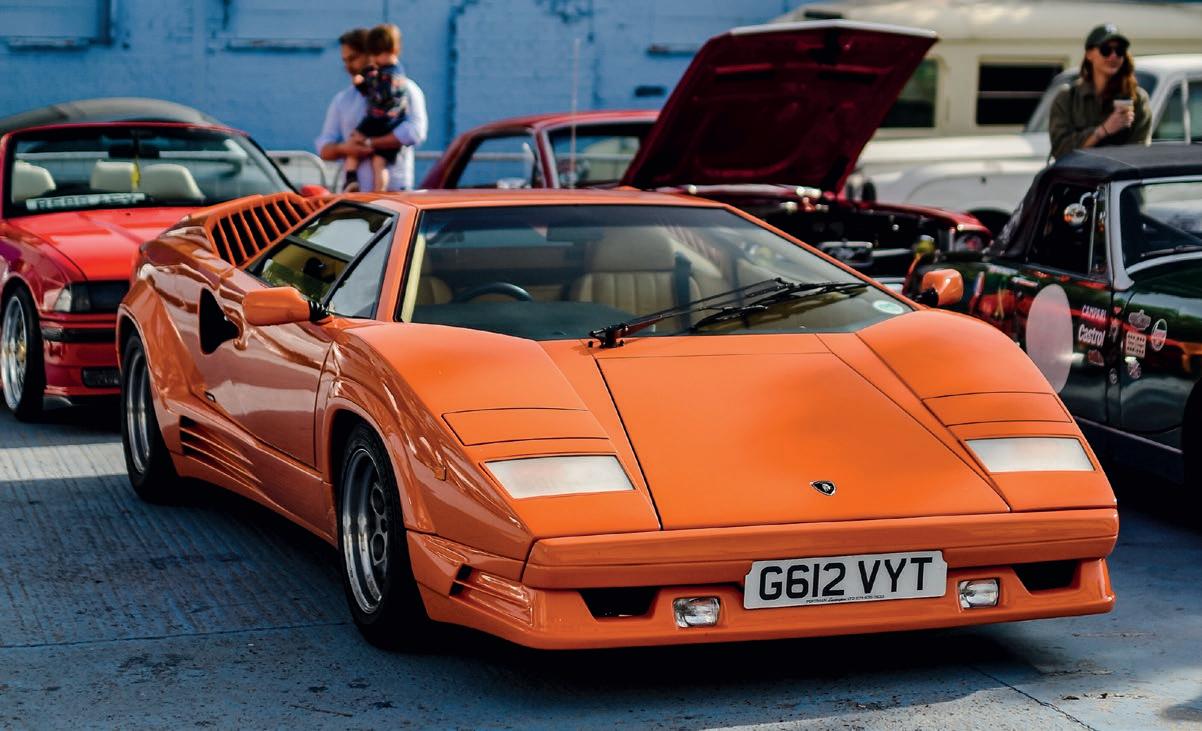
SPONSORED BY
1999 Ferrari F50
Formula 1 engines in road cars are the in thing right now, thanks to the new AMG hypercar, but Ferrari got there first 27 years ago with the thunderous F50.
The beating heart of this supercar is a 4.7-litre naturally aspirated V12 developed from the 3.5 used in the Scuderia’s 1990 641 F1 car. The engine produces 512bhp at a sky-high 8000rpm, while a meaty 347lb ft thuds in at 6500rpm.
The F50 has a carbonfibre tub, which means that despite its 12 cylinders it’s a relatively light 1230kg. The 60mph benchmark flicks by in 3.8 seconds, 100mph in 8.5 seconds and the car goes on to a claimed 202mph.
Only 349 were built, of which 302 were finished in Rosso Corsa. This example has covered a mere 12,000 miles and still has its roof box flight case and full luggage kit.
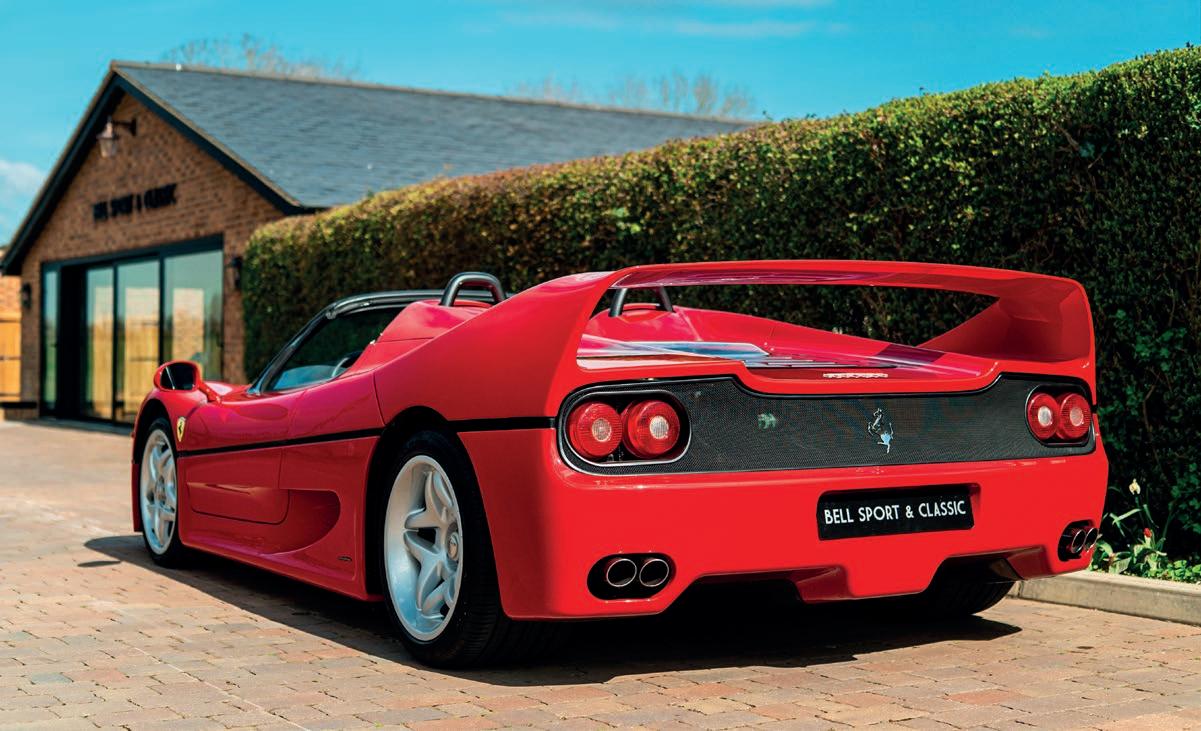
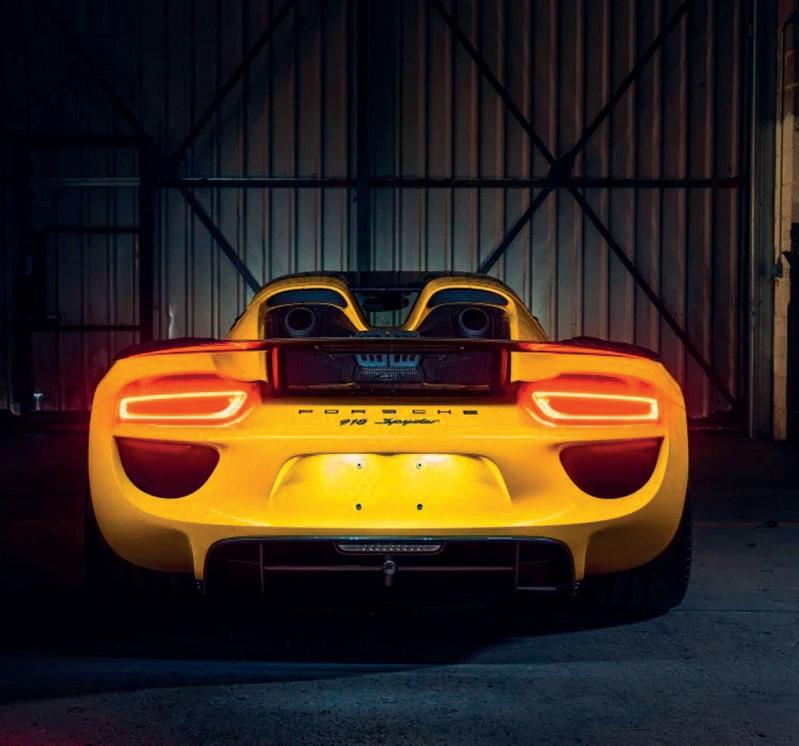
2015 Porsche 918
The Porsche 918 was a stunning vision of the future, way back in 2010. Its naturally aspirated 4.6litre V8 developed 599bhp, which was supplemented by two electric motors that provided an extra 282bhp for a combined output of 875bhp and 944lb ft of torque.
It could hit 0-62mph in 2.6 seconds, and 124mph less than five seconds later, before maxing out at 214mph. Just 918 examples were ever built, and some were offered with the Weissach Package, which boasted magnesium wheels, an extended rear diffuser, lashings of exterior carbonfibre and an Alcantara-trimmed interior.
We have two 918s for you to savour, both of them in exceptionally rare colours – Speed Yellow and Paint To Sample (PTS) blue. The latter is one of only six UK PTS cars, and is finished in McLaren Cerulean Blue to match the first owner’s P1. It also features Weissach wheels and Acid Green details.
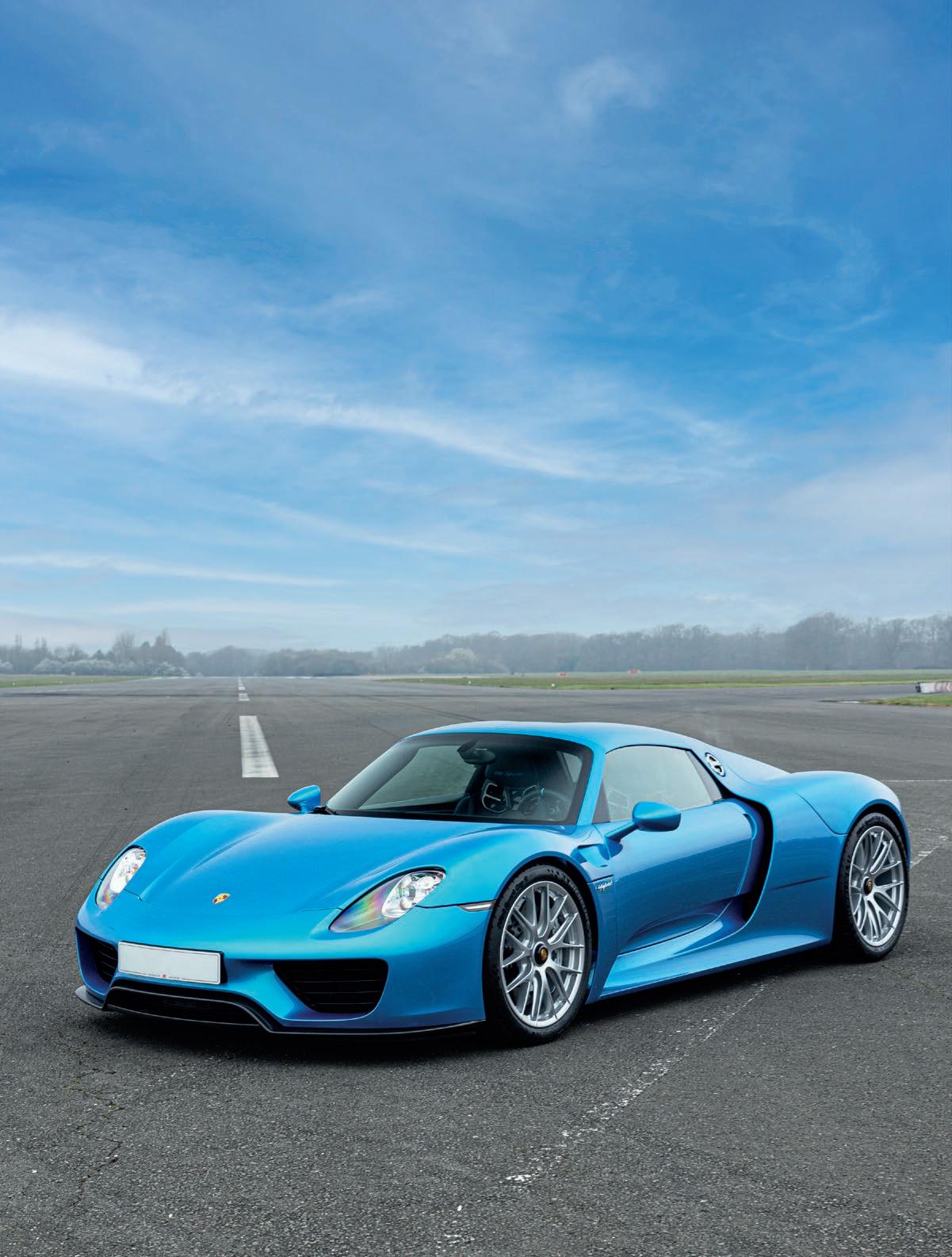
SPONSORED BY
2012 Koenigsegg Agera S
When Koenigsegg was thinking of names for its new hypercar, it settled on Agera – the Swedish verb meaning ‘to act’. There’s certainly plenty of theatre about the model, thanks to a twin-turbo 5.0-litre V8.
The S, of which this car was one of five, was built between 2012 and 2014 for markets without E85 biofuel. It produced 1030bhp and 738lb ft. This meant it could rocket from 0-62mph in 2.9 seconds, with 124mph flicking by five seconds later. All-out you would be doing 250mph, helped by a lightweight part-aluminium, part-carbonfibre honeycomb structure.
This 2012 Agera has an upgraded ’box for reliability and performance. It also features upgraded headlights, a carbon interior, One:1 rear-view mirrors in green carbon and hollow carbonfibre Aircore wheels.
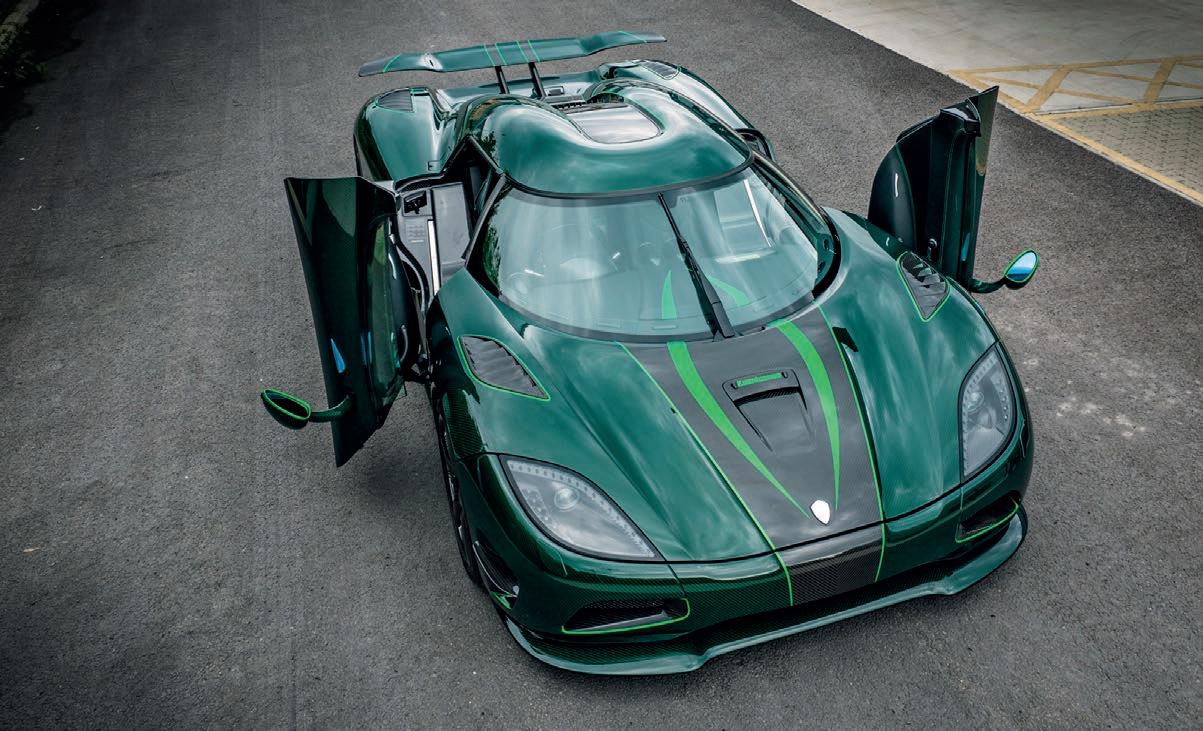
KRIS KNIGHT
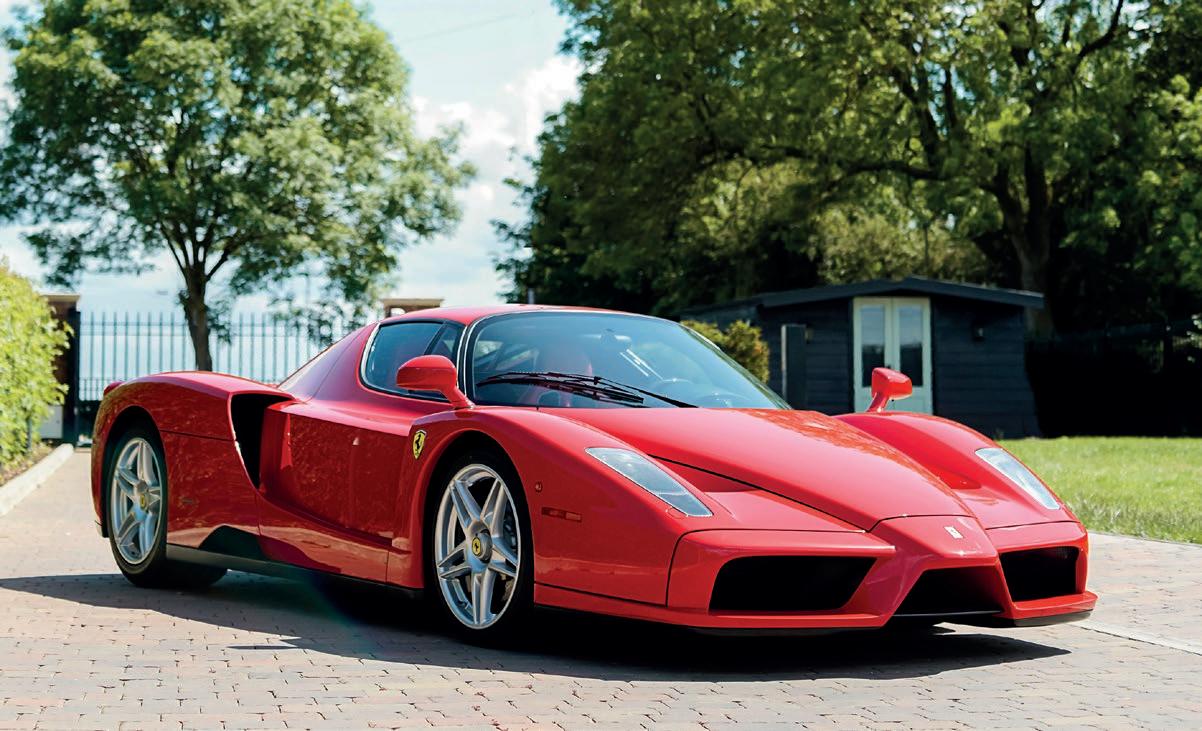
2004 Ferrari Enzo
Named after Enzo Ferrari, this car was a technological tour de force when it was launched in 2002. Much of the technology behind it was drawn directly from Ferrari’s F1 campaigns, utilising a composite body and a carbonfibre and aluminium honeycomb sandwich chassis. Its all-new 6.0-litre V12 produced 660bhp.
This car was originally supplied by Ferrari UK, and ordered in Rosso Corsa DS322 with Nero hide. At an early seat fitting, the order was amended to a Rosso interior. The Enzo was delivered to its first owner in 2004. He kept the car until 2011, at which point HR Owen sold it to its next owner, who then kept the Ferrari until 2021.
The car retains all of its original equipment, handbooks, factory luggage, car cover and keys, and has covered only 13,000km from new.
2020 Ferrari 488 Pista
Following in a heralded line of lightened, faster and more track-oriented mid-engined Berlinettas, the 488 Pista broke new ground. Its 3.9-litre twin-turbocharged V8 engine produced 710bhp at 8000rpm and 568lb ft at 3000rpm, which provided performance that could warp eyeballs.
The 0-62mph sprint was despatched in a scant 2.85 seconds, with 124mph appearing less than five seconds later. The Ferrari’s maximum recorded speed was a huge 225mph.
Its design was influenced by the racing versions of the model, and featured huge ducts in the front splitter that directed air over the bonnet to aid downforce. Overall the car created 20 percent more downforce than a 488GTB, and was 91kg lighter. This example has been signed by Charles Leclerc and Sebastian Vettel.

SPONSORED BY
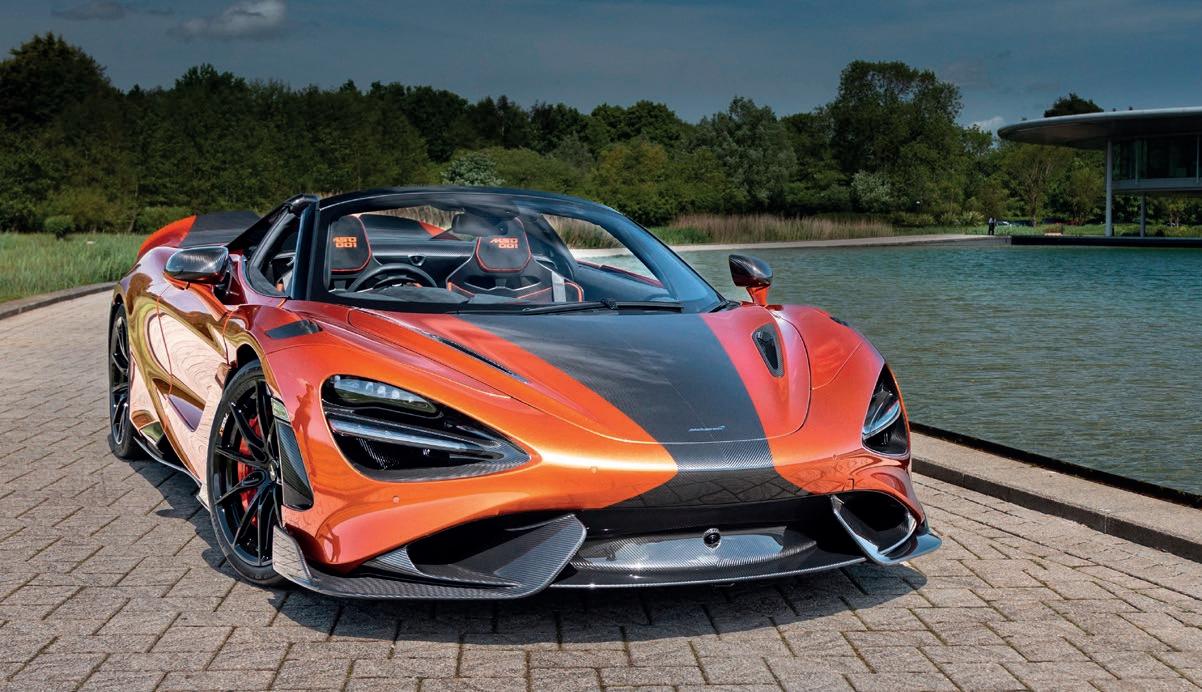
SYEED ALI
2022 McLaren 765LT MSO 001
The 765LT built upon strong foundations of the 720S, with its twin-turbo V8 now pumping out 755bhp and 590lb ft of torque thanks to the use of a highercapacity fuel pump, forged aluminium pistons and a Senna-sourced three-layer cylinder-head gasket.
It weighed 80kg less than the 720S, and could hit 0-62mph in 2.8 seconds, with 124mph coming 4.2 seconds later. Top speed was 205mph. This example is one of only 55 UK cars, and was a custom build by McLaren Special Operations on chassis no. 1.
It took eight months to design and six months to build, having been ordered in March 2018.

2021 Ford GT Carbon Series
In 2016 the Blue Oval wanted to do something special to celebrate 50 years since the GT40 won the Le Mans 24 Hours for Ford in 1966. The result was the GT Mk2. Two years later came the GT Carbon Series, which bridged the gap between the standard GT and the Competition Series cars.
Just 50 were built, and all were finished to each customer’s specific tastes. Extensive use of carbonfibre, along with a titanium exhaust and wheel nuts plus a polycarbonate hatch shaved 18kg from the weight of a standard GT.
Its mid-mounted 3.5-litre V6 engine produced a stonking 660bhp, while Brembo calipers and carbonceramic discs took care of stopping power.
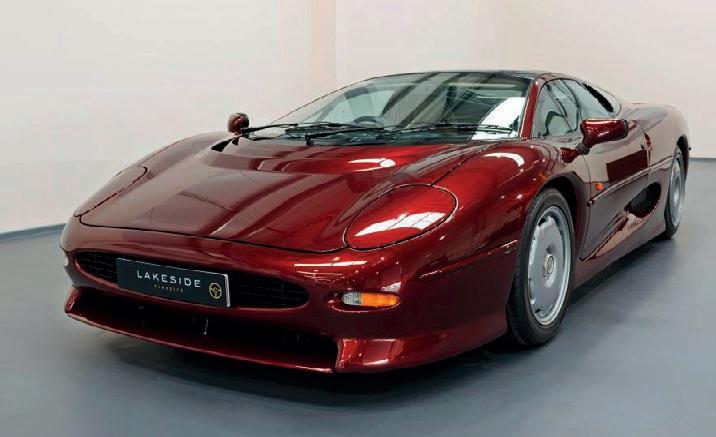
1992 Jaguar XJ220
Jaguar’s XJ220 was created by passionate engineers and designers in their spare time, with one intention only: to build the fastest car in the world. They achieved their aim.
Powered by a twinturbo 3.5-litre V6, its 542bhp helped push this elegant Keith Helfet design to a world-record 217.1mph top speed. This particular example is one of only 69 righthand-drive models built, and one of only four produced in Monza Red with a Biscuit leather interior. It’s had just one registered keeper and has covered fewer than 2000 miles.
It has recently been treated to a £5000 brake upgrade courtesy of Don Law Racing, which has looked after the car for the past ten years.
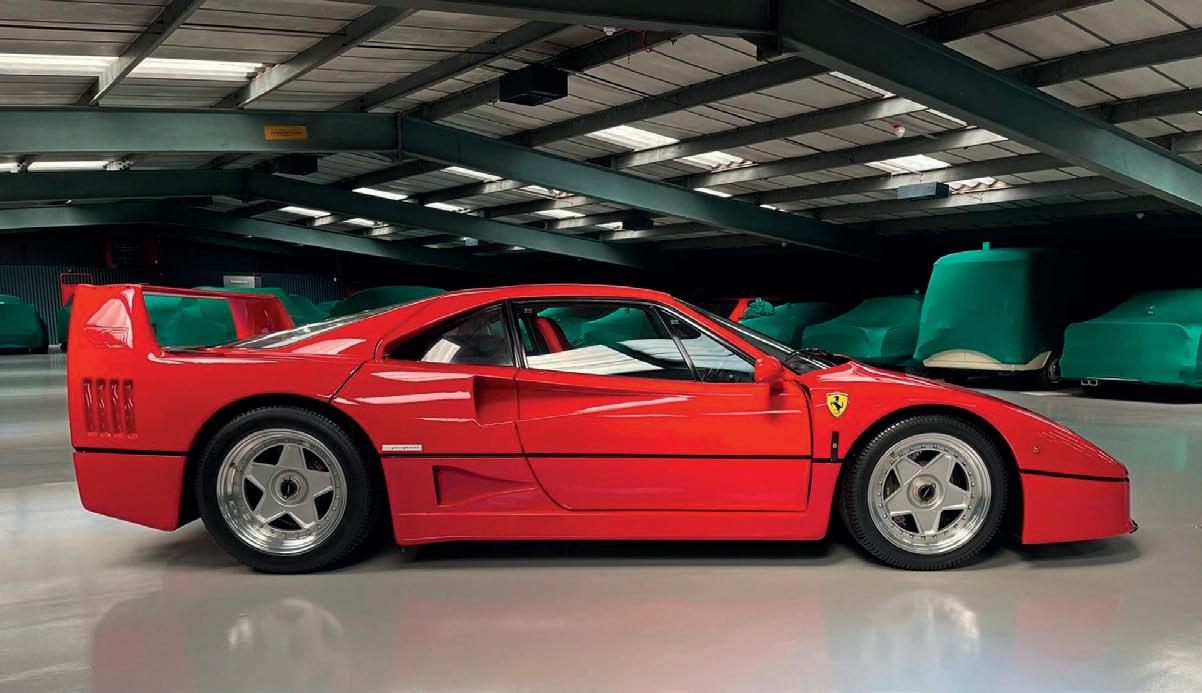
1992 Ferrari F40
Any car conceived to mark Ferrari’s 40th anniversary had to be special, and the F40 was certainly that. Its 2.9-litre twin-turbo V8 had 471bhp at 7000rpm and 426lb ft at 4000rpm.
The performance was breathtaking, with 0-60mph a memory after 4.2 seconds and 100mph arriving 4.1 seconds later. Its claimed 201mph top speed made it the world’s fastest production car at the time.
This car has a catalytic converter and nonadjustable suspension, and is finished in Rosso Corsa with a Stoffa Vigogna (red cloth) interior. The current owner acquired the F40 in 2021, and it’s covered 4000km since new.










